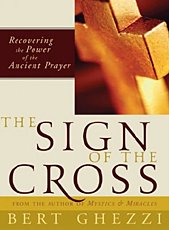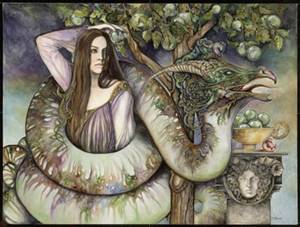 This is taken from a Zenit article dated April 5, 2006. ZENIT asked Father Thomas D. Williams, dean of theology at the Regina Apostolorum university in
This is taken from a Zenit article dated April 5, 2006. ZENIT asked Father Thomas D. Williams, dean of theology at the Regina Apostolorum university in Q: What is the "Gospel of Judas"?
Father Williams: Though the manuscript still must be authenticated, it likely represents a fourth- or fifth-century text, and is a copy of an earlier document produced by a Gnostic sect called the Cainites.
The document paints Judas Iscariot in a positive light, and describes him as obeying a divine ordinance in handing over Jesus to the authorities for the salvation of the world.
It may well be a copy of the "Gospel of Judas" referred to by St. Irenaeus of

Q: If authentic, what challenge would this document pose to traditional Christian belief? Will it "shake Christianity to its foundations" as some press releases have suggested?
Certainly not. The Gnostic gospels, of which there are many besides this one, are not Christian documents per se, since they proceed from a syncretistic sect that incorporated elements from different religions, including Christianity.
From the moment of their appearance, the Christian community rejected these documents because of their incompatibility with the Christian faith.
The "Gospel of Judas" would be a document of this sort, which could have great historical value, since it contributes to our knowledge of the Gnostic movement, but it poses no direct challenge to Christianity.
Q: Is it true that the Church has tried to cover up this text and other apocryphal texts?
These are myths circulated by Dan Brown and other conspiracy theorists.
You can go to any Catholic bookstore and pick up a copy of the Gnostic gospels. Christians may not believe them to be true, but there is no attempt to hide them.
Q: But doesn't an early document of this sort rival orthodox Christian sources, such as the four canonical Gospels?
Remember that Gnosticism arose in the middle of the second century, and the "Gospel of Judas," if authentic, probably dates back to the mid- to late second century.
To put a historical perspective on things, that would be like you or me writing a text now on the American Civil War and having that text later used as a primary historical source on the war. The text could not have been written by eyewitnesses, the way at least two of the canonical Gospels were.
Q: Why would the leaders of the Gnostic movement have been interested in Judas?
One of the major differences between Gnostic belief and that of Christianity concerns the origins of evil in the universe.
Christians believe that a good God created a good world, and that through the abuse of free will, sin and corruption entered the world and produced disorder and suffering.
The Gnostics blamed God for the evil in the world and claimed that he created the world in a disordered and flawed way. Thus they champion the rehabilitation of Old Testament figures such as Cain, who killed his brother Abel, and Esau, the elder brother of Jacob, who sold his birthright for a plate of pottage.
Judas fits perfectly into the Gnostic agenda of showing that God intends evil for the world.
Q: But wasn't Judas' betrayal a necessary part of God's plan, as this text suggests?
Being omniscient, God knows full well what choices we will make and weaves even our bad decisions into his providential plan for the world.
In his last published book, Pope John Paul II eloquently reflected on how God continues to bring good out of even the worst evil that man can produce.
That doesn't mean, however, that God intends for us to do evil, or that he intended for Judas to betray Jesus. If it wasn't Judas, it would have been someone else. The authorities had already decided to put Jesus to death, and it was just a matter of time.
Q: What is the Church's position regarding Judas? Is it possible to "rehabilitate" him?
Though the Catholic Church has a canonization process by which it declares certain persons to be in heaven, as saints, it has no such process for declaring people to be condemned.
Historically, many have thought that Judas is probably in hell, because of Jesus' severe indictment of Judas: "It would be better for that man if he had never been born," as he says in Matthew 26:24. But even these words do not offer conclusive evidence regarding his fate.
In his 1994 book, "Crossing the Threshold of Hope," Pope John Paul II wrote that Jesus' words "do not allude for certain to eternal damnation."
Q: But if anyone deserves hell, wouldn't it be Judas?
Surely many people deserve hell, but we must remember that the mercy of God is infinitely greater than our wickedness.
Peter and Judas committed very similar faults: Peter denied Jesus three times, and Judas handed him over. And yet now Peter is remembered as a saint and Judas simply as the traitor.
The main difference between the two is not the nature or gravity of their sin, but rather their willingness to accept God's mercy. Peter wept for his sins, came back to Jesus, and was pardoned. The Gospel describes Judas as hanging himself in despair.
Q: Why is the "Gospel of Judas" arousing so much interest?
Such theories regarding Judas are certainly not new.
It's enough to remember the 1973 play "Jesus Christ Superstar," where Judas sings, "I have no thought at all about my own reward. I really didn't come here of my own accord," or Taylor Caldwell's 1977 novel "I, Judas."
The enormous economic success of "The Da Vinci Code" has undoubtedly stirred up the pot, and provided financial incentive for theories of this sort.
Michael Baigent, author of "Holy Blood, Holy Grail," now has a book out called "The Jesus Papers," which recycles the old story that Jesus survived the crucifixion.
And a newly released "scientific" study asserts that meteorological conditions could have been such that Jesus really walked on ice, when the Gospels say he walked on water.
Basically, for those who reject outright the possibility of miracles, any theory, outlandish as it may be, trumps Christian claims.









